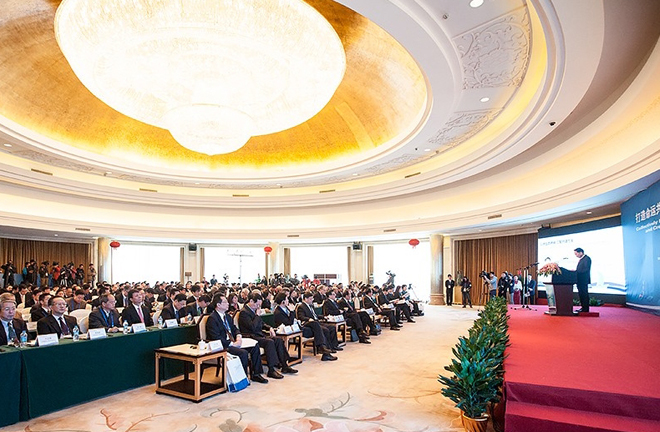Maritime Silk Road shines light on common destiny

An international seminar on the 21st Century Maritime Silk Road initiative was held in Quanzhou in Fujian Province on Feb. 11-12, with nearly 300 academics and experts hailing it as a platform to create a global community of common destiny.
“Conceptually, it is a brilliant idea to enhance global connectivity and an economically outstanding proposal to spur growth with massive development of maritime infrastructure,” said Madan Kumar Dahal, chairman of Mega Bank Nepal.
Sponsored by the State Council Information Office and co-organized by the Xinhua News Agency, Chinese Academy of Social Sciences (CASS), China International Publishing Group and Fujian Academy of Social Sciences, the seminar attracted nearly 300 academics and experts from more than 30 countries.
Quanzhou was chosen as the seminar’s host city due to its status as the starting point of the 21st Century Maritime Silk Road.
“It is a city of light. When night falls, countless lamps and torches light up all the streets and lanes, and the whole city, viewed from afar, turns into a sea of lights,” said Jewish trader Jacob d’Ancona in his 13th century memoir City of Light. Historically, Quanzhou also enjoyed a reputation as a crucial maritime hub where goods, people and ideas could be traded among China, India, Persia, Greece and Italy. Today, the 21st Century Maritime Silk Road preserves this essence despite changes throughout time.
During his visit to Indonesia in October 2013, Chinese President Xi Jinping proposed the 21st Century Maritime Silk Road connecting China with East and South Asia, the Middle East, Africa and Europe. Together with the Silk Road Economic Belt announced in a speech the previous month, the two initiatives, collectively termed “One Belt, One Road,” constitute a major Chinese foreign policy strategy.
Liu Qibao, a member of the Political Bureau of the Communist Party of China (CPC) Central Committee and the Secretariat of the CPC Central Committee, who is also head of the CPC Central Committee's Publicity Department, delivered the keynote speech at the seminar.
“To create a community of common destiny, mutual support and further cooperation among the countries along the route is indispensible. More investment in trade is necessary to boost interconnectivity and develop maritime partnership,” said Liu.
“China is the Association of South East Asian Nations’ (ASEAN) biggest trading partner. With the introduction of this logical and practical initiative, trade and economic ties between China and ASEAN will surely deepen in the near future,” said Khin Maung Lynn, joint secretary of the Myanmar Institute of Strategic and International Studies.
CASS President Wang Weiguang noted in his speech at the seminar that more than 2,000 years of communication between the East and the West has proved that mutual learning and joint benefits will achieve win-win results, whereby different nations and diversified cultures can harmoniously pursue common development. Looking to the future, Wang said this is the “inspiration that we draw from the past of the Maritime Silk Road.”
